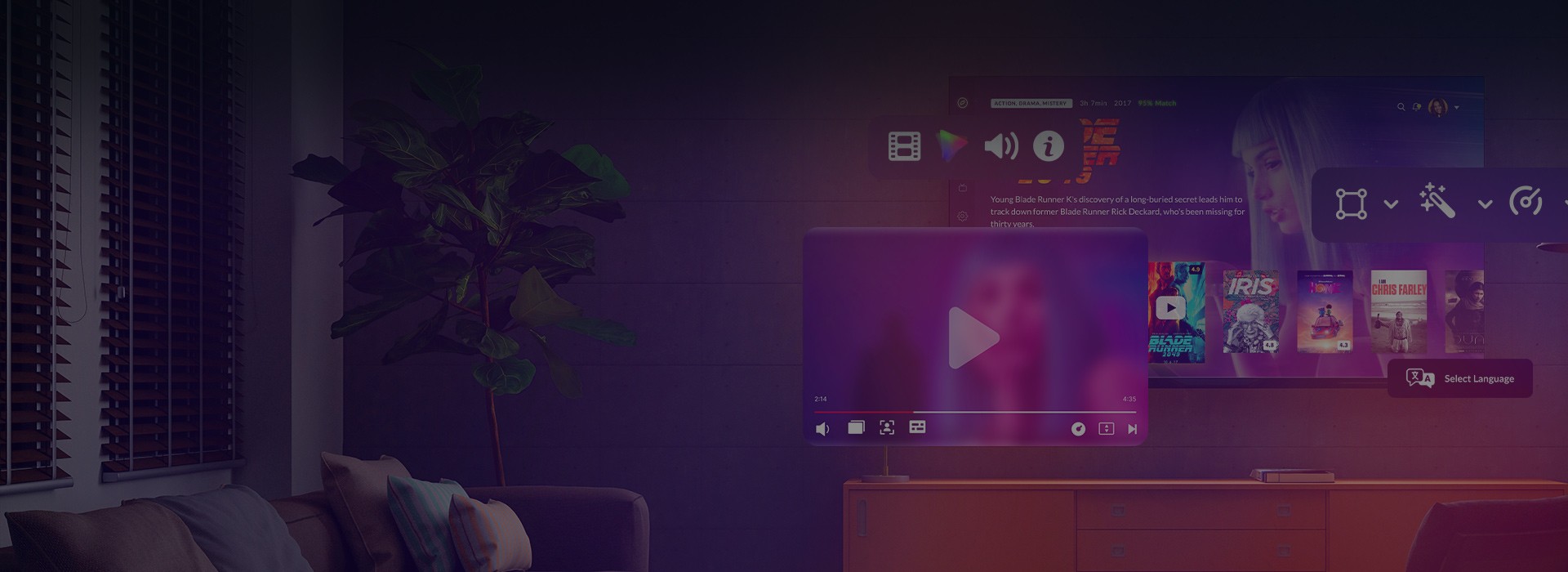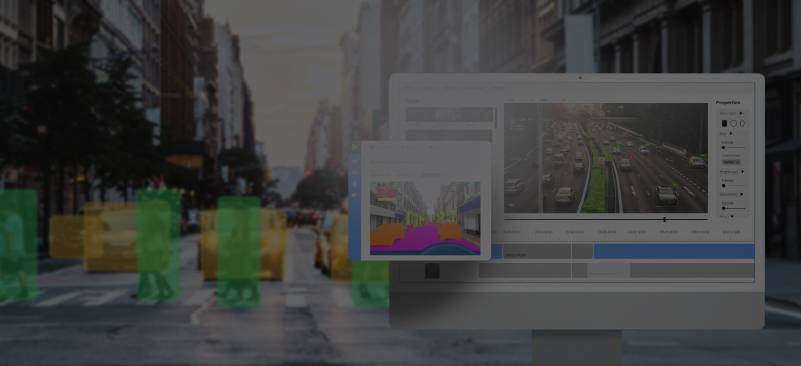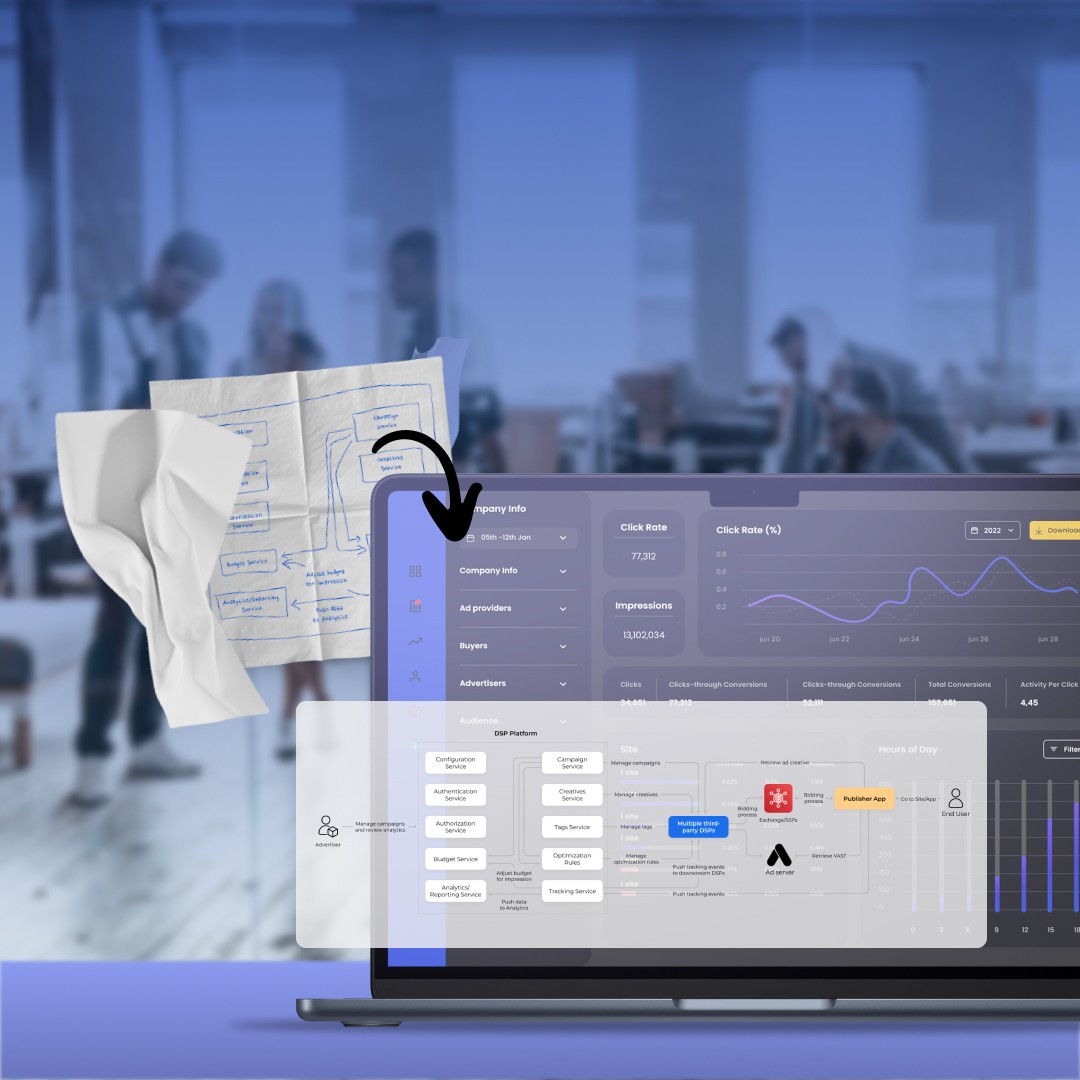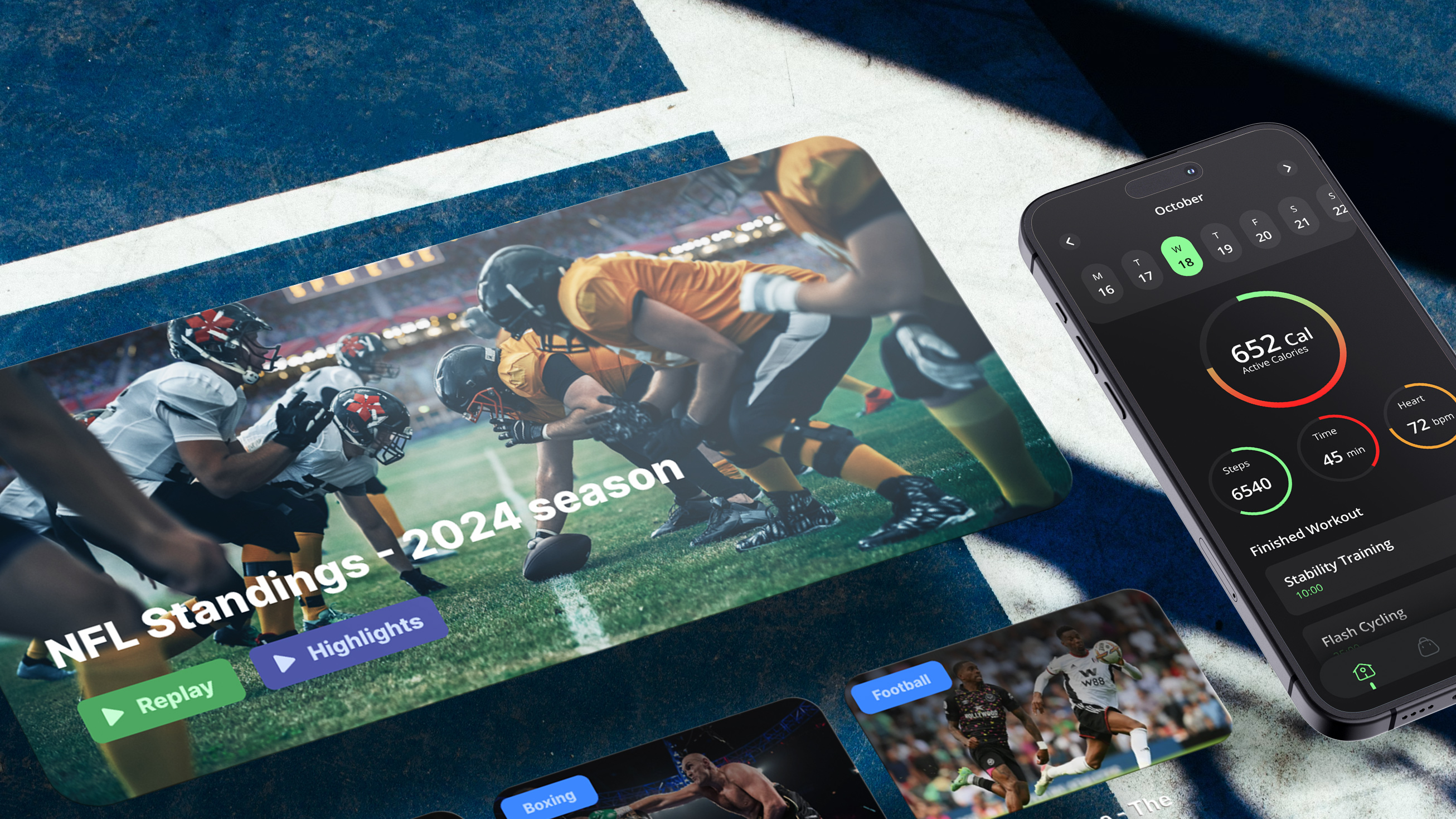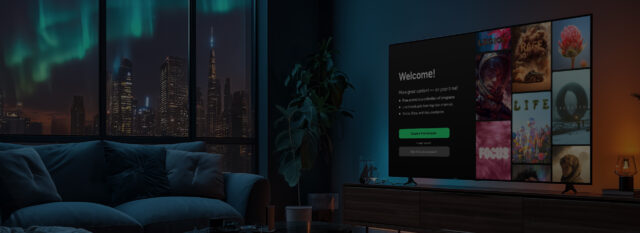When it comes to Smart TV platforms, Roku is a universe of its own. Sleek. Scalable. Surprisingly particular. On the surface, it’s the platform every content owner wants to be on, and for good reason. With over 90 million households using Roku devices1. and the OS leading the Smart TV market in the U.S., Canada, and Mexico2, the opportunity is enormous. From AVOD and SVOD to FAST channels, Roku opens the door to nearly every monetization model worth pursuing. But there’s a catch, and it’s not a small one.
Roku app development services are not just about building for another screen. It’s about learning an ecosystem that runs on its own rules. If you’re stepping into this playground thinking it’s a simple extension of your web or mobile strategy, prepare for some whiplash.
At Oxagile, we have been building Roku apps that run seamlessly across devices and reach millions. And we’ve learned firsthand where the platform shines and where it fights back.
Let’s talk about that.
What makes Roku TV app development so different?
If you’ve dabbled in Android TV or Fire TV, you might think Roku is just another name on the list. But Roku app developers know that creating such a type of app is a bit like moving to a new country — same planet, different alphabet.
Here’s why:
- BrightScript: the language you didn’t see coming
Roku apps run on BrightScript, a proprietary scripting language with a syntax all its own. It’s efficient, yes — but it’s also unfamiliar to most developers. If your team is fluent in JavaScript or Swift, you can still expect a learning curve.
- SceneGraph: flexibility with guardrails
Roku’s UI is built with its own component-based markup system called SceneGraph. It’s functional and well-integrated but rigid. You can build fast, but not wild. Want a custom animation or advanced UI logic? Prepare for workarounds.
- Sparse documentation at scale
While Roku offers plenty of guides for basic tasks (buttons, carousels, lists), there’s little hand-holding for building full-scale, production-ready apps. You won’t find a detailed template for building Netflix 2.0 — that blueprint is yours to draw.
- Limited SDKs, minimal third-party support
Unlike mobile or web ecosystems, Roku offers few ready-made integrations. Features like authentication, complex analytics, or advanced video players require custom builds or clever external plug-ins.
And yet… it works. When built right, a Roku app can deliver stunning performance, rapid startup times, and silky-smooth streaming even on modest hardware.
Case in point: Roku app for a music streaming company
When a global music streaming brand approached Oxagile, their goal was clear: deliver a Roku app that feels just as smooth, fast, and intuitive as their mobile and desktop platforms. We built a fully custom channel with cross-device playback, an adaptive UI, and seamless content delivery — while working within Roku’s performance limits and SDK constraints.
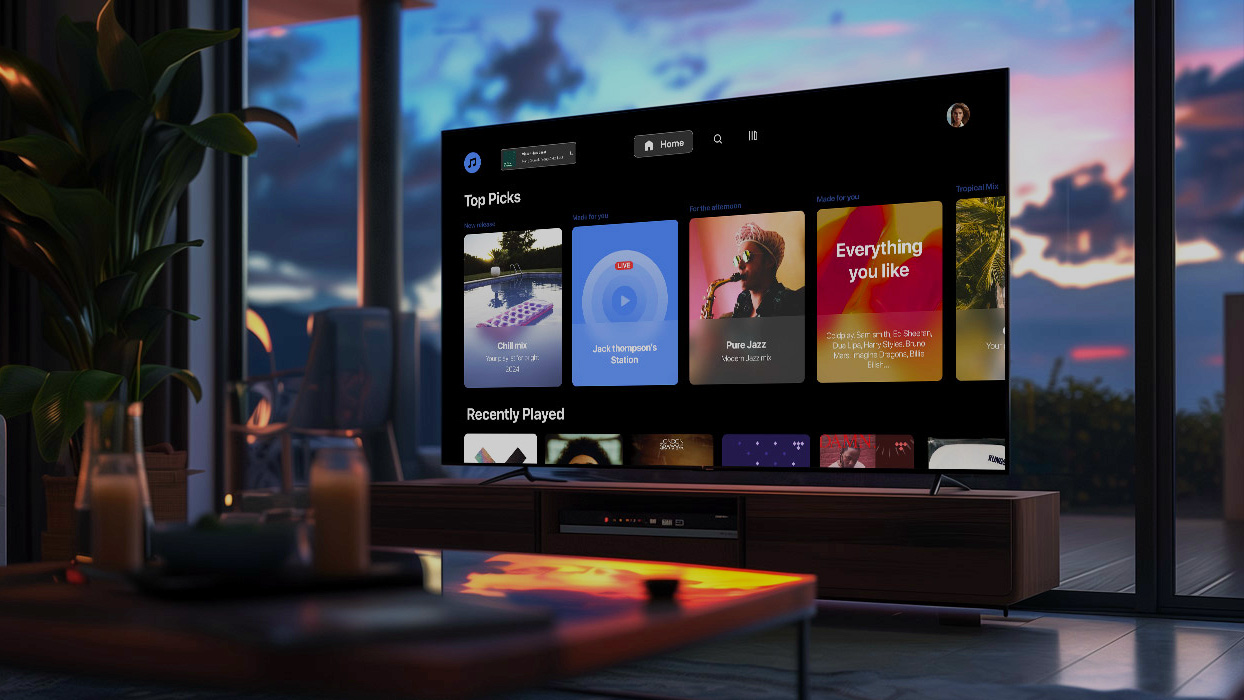
Want the full story?
Explore the case study — and see how it all came together.
How Roku apps are made: insights into our step-by-step Roku application development approach
You’ve got the content. You’ve got the audience. And Roku looks like the natural next step. But if you’ve never launched on this platform before, here’s what you need to know: Roku development isn’t just a technical task. It’s a sequence of business decisions that unfold in code.
Here’s how we build Roku apps at Oxagile — not from checklists, but from experience.

1. Start with clarity, not code
Before any development begins, we help clients answer a few fundamental questions:
- What content are you delivering: on-demand, live, or hybrid?
- Will it be free, paid, or ad-supported?
- Do you need user authentication, personal watchlists, or smart recommendations?
These aren’t just technical specs — they define the structure of your app and how the entire user experience will function. We’ve seen projects stall because teams jumped into UI before defining the business model. So we start the other way around.
2. Choose your path: quick setup or full control?
There are two ways to get on Roku:
- Direct Publisher — no coding, limited branding, faster time to market.
- SDK-based development — full customization, scalability, and ownership over your app’s future.
We almost always recommend the SDK path. It’s more effort upfront, but it opens the door to everything you’ll need later: custom design, advanced playback logic, integrated monetization, user accounts, dynamic feeds, and the list goes on.
3. Design for how people really watch
Designing for Roku is different. There’s no touch. No mouse. Just a remote. That’s why we think about navigation first. How does it feel to browse your content with five buttons, on a couch, across a dozen screen sizes?
At Oxagile, we design every Roku UI around one goal: make it fast to find something worth watching. And make the experience feel effortless on even the oldest Roku stick someone forgot to update.
4. Build with precision, not assumptions
Roku development relies on BrightScript and SceneGraph — tools that are purpose-built, but not widely adopted outside the Roku world. That means no shortcuts. No borrowed libraries. Everything is built with performance and compliance in mind. Typical tasks include:
- Building out content feeds and screen hierarchies
- Connecting metadata, APIs, and analytics
- Configuring ads and user behavior logic
- Optimizing loading and buffering times for certification
For cross-platform video players, we often integrate third-party SDKs like Bitmovin to ensure playback consistency across Roku, mobile, and web, without compromising performance.
5. Test beyond the happy path
We test across a spectrum of Roku devices — not just for visual polish, but for the invisible things users notice first: app startup time, stream loading delay, broken navigation logic, unresponsive UI.
We also prepare the app for Roku’s certification review, checking technical compliance, content guidelines, and store requirements. It’s the final checkpoint before launch — and one we never leave to chance.
6. Launch is just the beginning
Once your app is certified (usually within 24–48 hours), it goes live. But the work doesn’t stop there. We stay involved to:
- Monitor performance and user behavior
- Tune ad behavior and monetization flow
- Add features as user expectations evolve
- Keep everything optimized for the latest Roku OS updates
In other words, we don’t treat app delivery as a finish line. We treat it as day one of iteration.
Want a development partner who’s been through the Roku process enough times to know where things break and how to fix them before they do?
Take a look at our Roku app development services and let’s talk about what you want to build, and how to build it right.
What makes Roku app development so challenging
Roku has a lot going for it: an engaged audience, smooth performance, and a relatively clean OS. But under the hood, it’s not the friendliest environment for developers, especially those expecting shortcuts or reusable tools from other platforms. Here are the most common blind spots and platform-specific limitations we’ve learned to navigate.
1. BrightScript: powerful but unfamiliar
Roku uses BrightScript — its own proprietary scripting language. It’s not hard, but it’s different. Developers used to JavaScript or Python won’t find much that feels familiar. There’s also limited community support, meaning when you hit a wall, Google won’t always bail you out.
The good news? Once you know how to work with it, BrightScript can be lean and reliable, and it’s built for one thing: streaming that works.
2. SceneGraph UI: flexibility with boundaries
SceneGraph gives you a set of building blocks to create Roku-native interfaces. But those blocks are fixed. Want a complex animation or a layout that breaks the mold? It’ll take time or workarounds.
Designing beautiful apps within SceneGraph’s rules is possible (we do it all the time), but it means getting creative within limitations. And you have to know what’s worth customizing and what’s not.
3. Missing documentation (including where it matters most)
Roku’s docs are decent for small components. You’ll find examples of how to build a list, a button, or a splash screen. But if you’re looking for an end-to-end guide to building a fully featured channel — with user auth, dynamic content, and monetization — it’s not there.
We’ve filled the gap with our own internal playbooks, based on years of trial, iteration, and repeatable success. That’s often what saves our clients weeks of development time.
4. Limited third-party SDK support
Most streaming platforms today offer dozens of plug-and-play SDKs. Roku doesn’t. If you want integrations (analytics, subscriptions, recommendation engines), you’ll either need custom development or external tools that play nice with Roku’s sandbox.
We’ve built Roku apps that extend the native player with third-party layers like Bitmovin, helping clients unify playback across Smart TVs, mobile, and web. It’s not plug-and-play, but it’s doable with the right hands on the project.
5. Certification standards can be unforgiving
Roku’s review team moves quickly (often 24–48 hours), but they’re strict on performance and UI guidelines:
- Your app must launch within a certain time.
- Video playback must be smooth and responsive.
- Content must comply with Roku’s editorial standards.
- Navigation must follow Roku’s interaction logic.
Fail any of these, and you’re back to revisions. That’s why we bake certification checks into our QA process not as an afterthought, but as a development requirement from day one.
Want the math to match your roadmap?
We’ll help you estimate the budget, the timeline, and the trade-offs that make sense for your audience and business case.
How much does a Roku app cost?
Let’s be honest: cost is usually the second thing people ask, right after “how fast can we launch?” And like most platform projects, the answer is: it depends on how far you want to go.
There are two main paths, and each has its own price logic.
Let’s break them down.
Option 1: Fast, simple, limited — Direct Publisher
If you’re looking for speed and don’t need much control, Roku’s Direct Publisher is the quickest way in. No code. No fuss. Just your video feed, basic branding, and you’re live.
It’s a good option if:
- You’re testing an idea
- You don’t need advanced navigation or monetization
- You’re okay with looking like thousands of other channels
But let’s be clear: this isn’t built for growth. Once you need subscriptions, recommendations, or even a “Continue Watching” feature, you’ll hit a wall.
Option 2: Custom Roku development — built for scale
If you want to build something that reflects your brand, fits your audience, and adapts as you grow, custom is the way to go. This is where Roku channel development services from teams like Oxagile make all the difference. With the Roku SDK, our team of Roku TV channel developers can help you:
- Create a unique, branded user experience
- Add ads, payments, logins, and personal content flows
- Integrate your backend, analytics, or third-party services
- Make your app feel fast and native on every device
And we don’t stop at launch. We track, tune, and help you scale once users start coming in. You are welcome to learn more about our custom video solutions or how we approach IPTV development to create a wider picture of how we can help.
If you’re planning to launch your own channel, this is the part most teams underestimate, and it is what separates smooth launches from endless revisions.
Let our Roku team help you avoid the usual traps.
So, here are the main factors shaping the cost
A custom Roku app comprises strategy, design, architecture, QA, and long-term support. Some of the biggest cost drivers include:
- How much content you have (and how it’s structured)
- Whether you need monetization (AVOD, SVOD, TVOD, etc.)
- How custom your UI and features need to be
- Hosting, CDN, and integration tools
We’ve built lean MVPs for first-time OTT players. And we’ve also delivered high-performance platforms for major media brands rolling out across five continents. For that experience, we can say that the cost always starts with one thing: clarity on where you want to go.
Already comparing providers? We’re proud to be listed among the top Roku development companies, and you can learn why you can trust us here.
Final thoughts: why Roku is worth doing right
Building a Roku app isn’t just about reaching another screen. It’s about showing up where your audience already is — on the biggest screen in the house, with the remote in hand and time to watch.
But visibility on Roku isn’t automatic. With over 500 free live TV channels on the Roku channel alone2 and thousands more in the store, your app needs more than just a good idea: it needs a well-built, well-tested experience that works flawlessly across devices and keeps people coming back. And that’s where we come in.
At Oxagile, we’ve been helping content providers, media platforms, and broadcasters turn their Roku vision into polished, scalable reality. Whether it’s a lightweight AVOD app or a complex multi-platform ecosystem — we know the platform, we know the constraints, and we know how to build around them without compromising performance or creativity.
If you’re ready to explore what’s possible on Roku and what it will take to do it right, we’re here for that conversation.
Sources:
1. Yahoo Finance — Roku Rings in the New Year with 90 Million Streaming Households
2. Wikipedia — Roku OS

